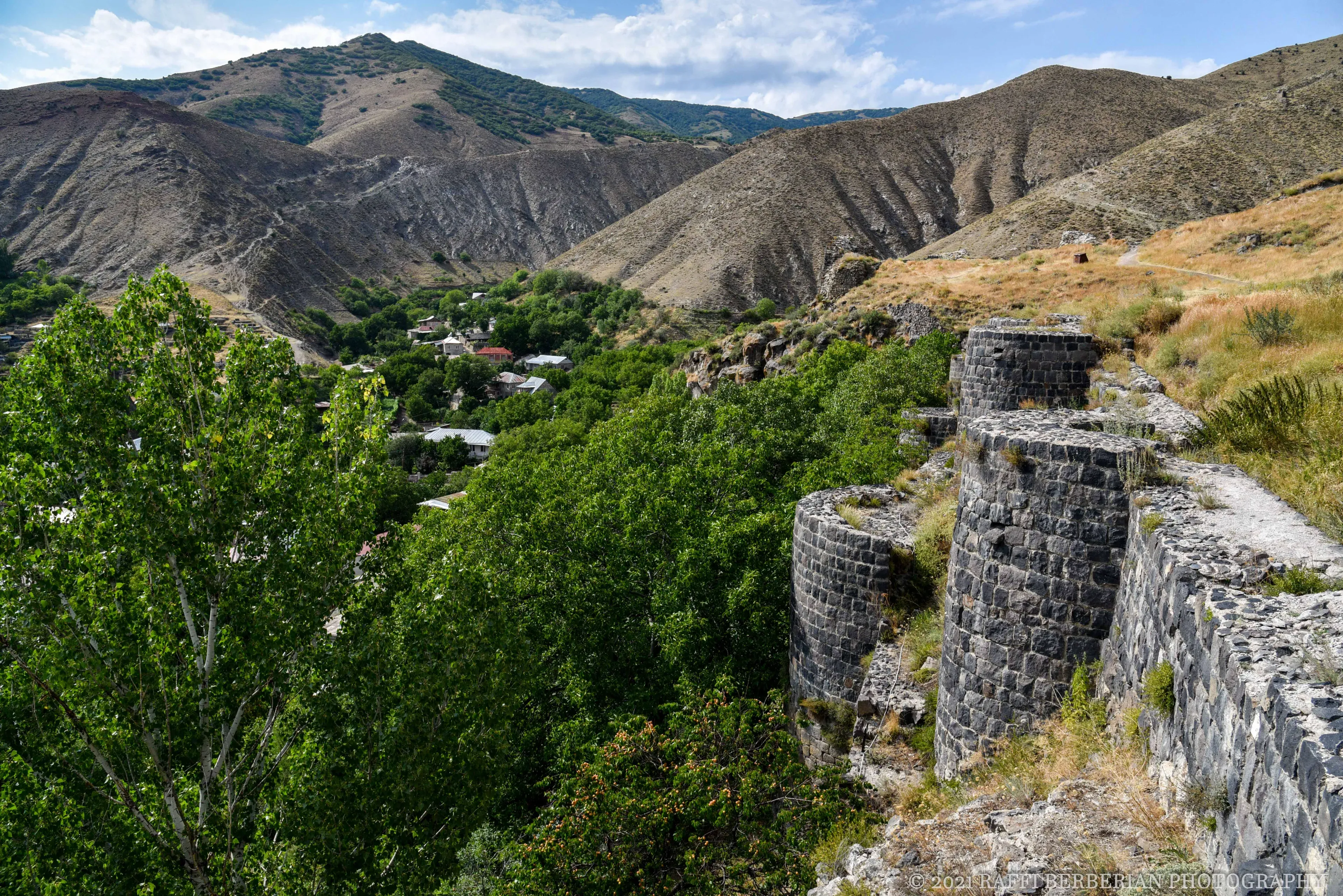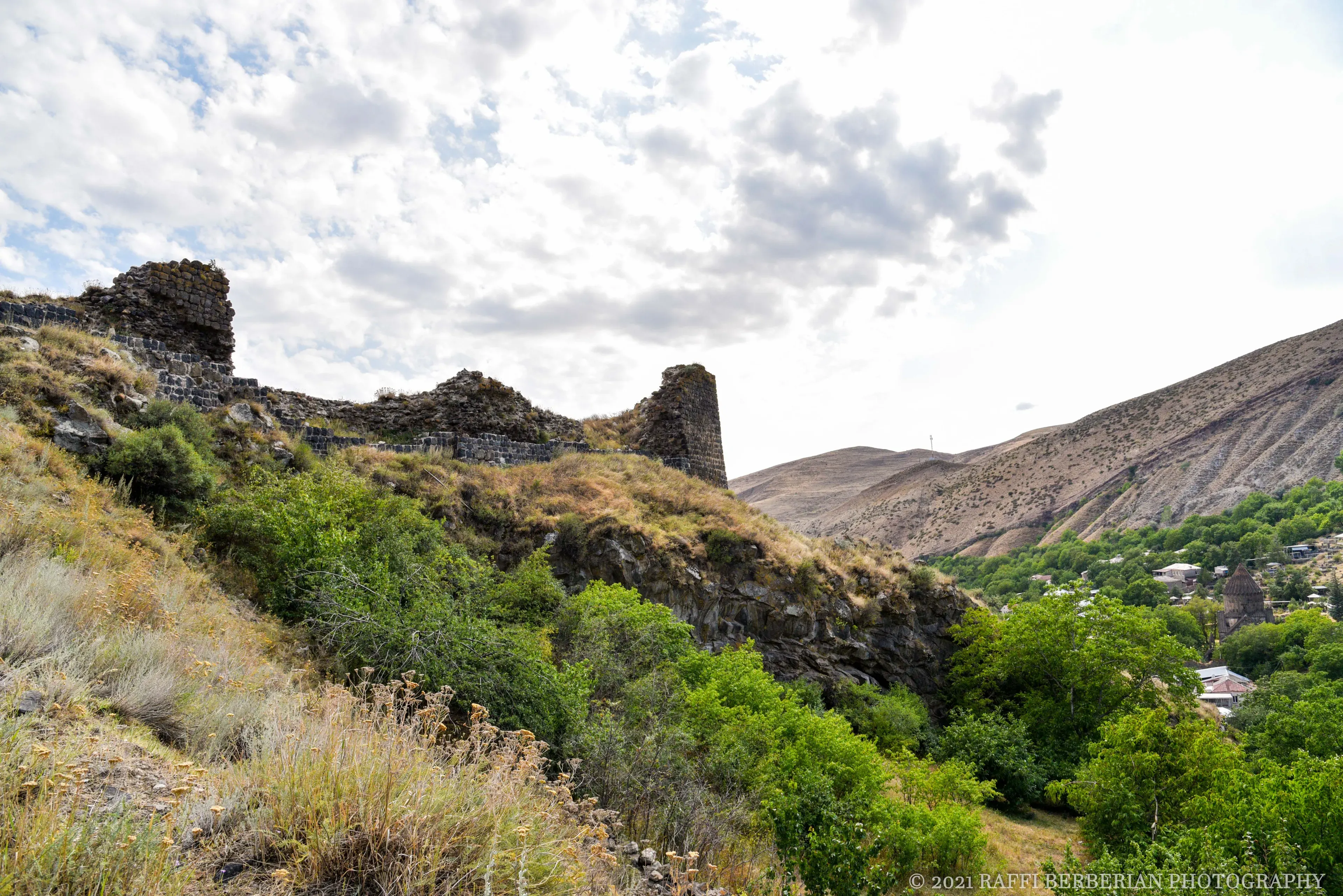Location details
| Built | 900 |
On a rocky plateau overlooking the village of Bjni to the northeast sits the imposing Bjni Fortress. The fortress was built in the 9th to 10th centuries by the royal Pahlavuni family of the Bagratuni Dynasty. Not much remains of the fortress because of several invasions. First the invasions of mercenary Turkish soldiers of the Daylamis at Bjni in 1021. Then from the years 1387–88, during the invasion of conqueror Timur Lenk. The majority of what you can see today are portions of the exterior fortification walls. Directly above the large exterior wall, there is a passageway that cuts through the rock to the bottom of the wall. It is from here that inhabitants could have escaped to the Hrazdan river in the event of a siege. Also according to a legend, a secret passage connected the fortress and the Astvatsatsin church in the center of the village. High on the plateau above the walls in the "upper fortress" there are several structures to see. Most notable and visible is a palace building consisting of two halls. It is made with brightly colored red and black tuff stone. Right next to the palace building you will see the foundations of the 9th-10th century Surb Khach (Holy Cross) Church. Continuing on next to the church there is an underground building that may have served as a cistern for storing water or a place to store grains. You can see the remnants of the vaulted ceiling. Other than those large structures, you can still see remnants of foundations of residential buildings scattered around. Many of these structures were undiscovered until an expedition of the Department of Archaeology of Yerevan State University from 1977-1978. Other than that, take your time exploring the area and enjoy the amazing views you have of the village, the surrounding plateau, and the river!
Recommended by Metaport













